A Timeline history of the Violin Bow - from c. 1600 - 1800
... the sources in detail ...
Heinrich Ignaz Franz von Biber (1644 - 1704)
Sonataæ Violino Solo Nürnberg or Salzburg, 1681
Although Biber wrote no treatise, and there is no specific technical or performance practice information in any preface, his music itself includes some fairly technically advanced and challenging kinds of bowing, which are worth showing - all of these featuring some use of dots:
First, what must be 'up-bow staccato';- either in isolated long runs (this from the beginning of the first Sonata in A major:
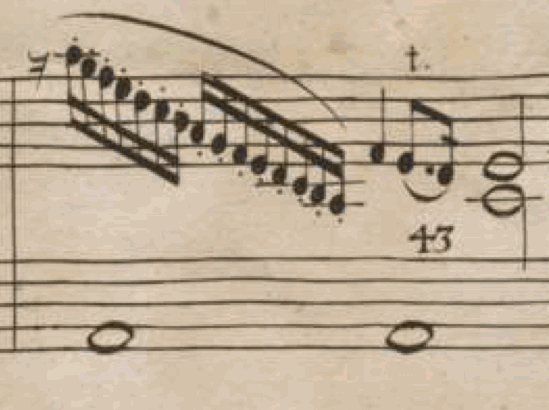
.. many runs in quick succession (from Sonata VII):
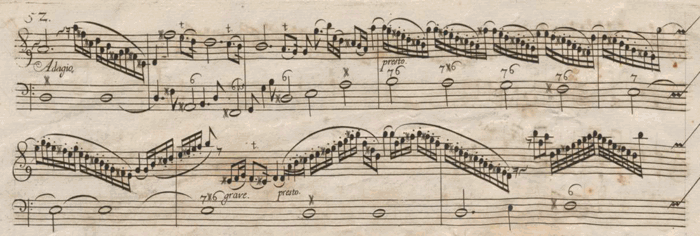
.. or, also from Sonata VII, oft-appearing shorter units:
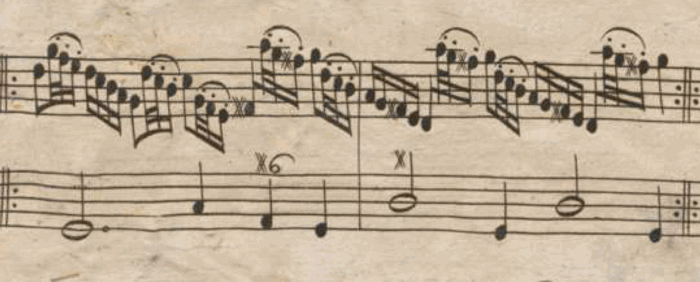
The other very typically Biber bowing is this (from Sonata II) - two downs followed by one up;
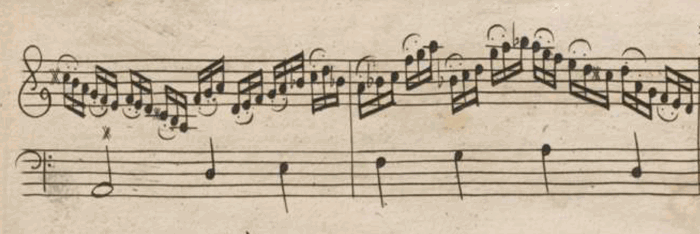
First, what must be 'up-bow staccato';- either in isolated long runs (this from the beginning of the first Sonata in A major:




I can only get last stroke to work as a 'thrown slur', so to speak, relying on the elasticity of the bow to create the articulation. Interestingly, in my experience (both personal, and that of my students), it seems to work best with a somewhat shorter bow, held with the thumb on the frog - just as the iconographical and written sources seem to suggest at this time and place.
As a last example, also from Sonata II, a very early use of 'stand-alone' dots:
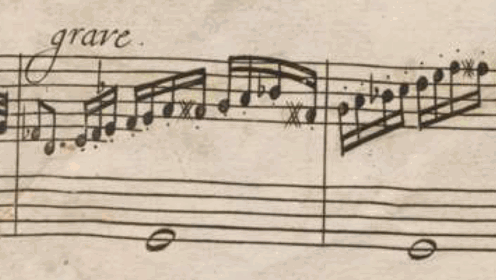

While today such dots might seem quite normal, it is actually quite unclear what Biber might have meant - coupled as they are with the specific tempo instruction, Grave. He could mean quite simply that the notes are short (so 'staccato' dots) - or perhaps 'not legato'. Or just 'not slurred'? If played with a short, light bow, with a thumb under the frog grip, a modern staccato-like stroke taking the bow off at every note is seems unlikely, it goes against the characteristics of the bow.